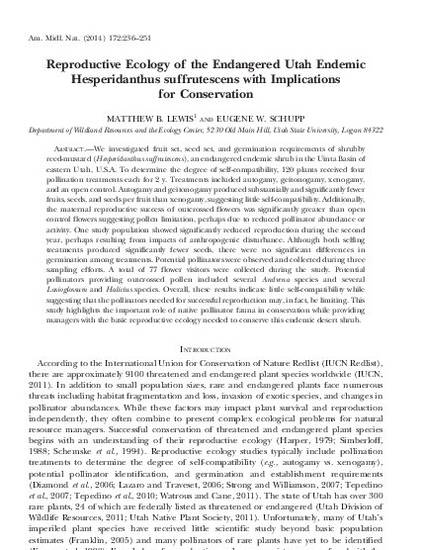
Article
Reproductive Ecology of the Endangered Utah Endemic Hesperidanthus suffrutescens with Implications for Conservation
American Midland Naturalist
(2014)
Abstract
We investigated fruit set, seed set, and germination requirements of shrubby reed-mustard (Hesperidanthus suffrutescens), an endangered endemic shrub in the Uinta Basin of eastern Utah, U.S.A. To determine the degree of self-compatibility, 120 plants received four pollination treatments each for 2 y. Treatments included autogamy, geitonogamy, xenogamy, and an open control. Autogamy and geitonogamy produced substantially and significantly fewer fruits, seeds, and seeds per fruit than xenogamy, suggesting little self-compatibility. Additionally, the maternal reproductive success of outcrossed flowers was significantly greater than open control flowers suggesting pollen limitation, perhaps due to reduced pollinator abundance or activity...
Disciplines
Publication Date
2014
DOI
https://doi.org/10.1674/0003-0031-172.2.236
Citation Information
Eugene W. Schupp. "Reproductive Ecology of the Endangered Utah Endemic Hesperidanthus suffrutescens with Implications for Conservation" American Midland Naturalist Vol. 172 Iss. 2 (2014) p. 236 - 251 Available at: http://works.bepress.com/eugene_schupp/129/
